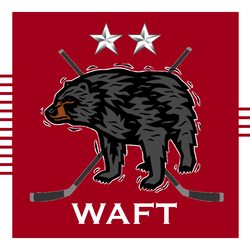Your time is up, my time is now
You can’t see me, my time is now
This team has had some big ambitions. ECAC Hockey Championships. Frozen Four Championships. Where does that all begin? Lynah Rink.
A lot of big talk was had last weekend about showing up big against the North Country teams. The first two periods of the weekend looked like it was all talk. It almost would have been better if we couldn’t have seen the first two periods of hockey on Friday night at Lynah. The third period, though? Now, that was a period that felt like this team’s time was NOW.
Many speak about leadership from upperclassmen. No doubt is leadership essential, but this third period was fueled by the freshmen and sophomores. Jaime Bourbonnais lit the lamp and Amy Curlew kept the fire raging as the game was reset.
Friday’s game is a ready-made metaphor for exactly what happens in the playoffs and it is exactly the “learning lesson” that this youthful team was in sore need of. If the first two periods are how this team plays, the final game of their seasons, of the seniors’s careers, will tick down on Saturday. If this team puts 120 minutes together as solid as the last 20 on Friday evening, their season will still be alive. If it doesn’t?
Their time will be up.
I’m slaughtering stale competition, I got the whole block wishin’
They could run with my division but they gone fishin’
With no bait, kid your boy hold weight
I got my soul straight, I brush your mouth like Colgate
The Red-Raider series this year is a mirror. The Raiders came away victorious at Riggs Rink in a 2-1 decision while the Rouge took away its own 2-1 victory at Lynah. The tightness of this season’s series belies the difficulty that the Raiders will bring to Lynah Rink. Cornell and Colgate have the same number of league wins this season. The difference in standings is the number of ties that the Red has racked up.
Colgate has been a team of streaks this season, not suffering a loss until its 14th game. The Red did not even go two whole weekends without suffering its first loss. But that’s not to say that the Raiders have cooled down while the Red heated up. Cornell has had no more than seven games without a loss, its longest streak of the season, just snapped Saturday. Colgate’s last streak lasted nearly as long and also was active until this past weekend. The Raiders may be a number six seed in the playoffs, but the difference between Cornell and Colgate is less stark than the three vs. six implies.
Colgate also has done something that this Cornell team has not accomplished this season: It has beaten St. Lawrence. Colgate is not to be trifled with. Goaltending is not a weakness for the Raiders. Both their typical starter, sophomore Julia Vandyk and their freshman back-up, Liz Auby, have solid save percentages and results. Vandyk has started the lion’s share of games and, in spite of recording every loss this season, she holds a 0.924 save percentage. Auby has seen fewer starts by almost a tenth, but she has yet to lose a game.
The penalty kill for the Raiders is strong: almost 91%. How does that compare nationally? Only behind Boston College and another familiar foe for the Red: Wisconsin. Colgate’s penalty kill is more than just “solid,” it is amongst the best in the nation and has scored as many short-handed goals as Cornell has. Special teams are not going to be an easy way to beat the Raiders. Cornell edges Colgate in terms of power play, but barely. The 1.5% of edge that Cornell has on Colgate accounts to just one more power-play goal in 66 opportunities. Given that Cornell has only had twice that many opportunities in the entirety of the season, that sort of edge is unlikely to be beneficial in a two-game series.
Cornell sits in an unenviable seven spot in the PairWise Rankings. Beating Colgate (11) will likely do little to push the Red in. Losing to Colgate will certainly end the Red’s season for good. The time is past for Cornell hoping for an at-large bid to make the NCAA Tournament. If this team has Frozen Four ambitions, there is only one sure-fire way to make it there: earn a spot.
Is Cornell’s time up…or is it now? Only time will tell.



 RSS Feed
RSS Feed
